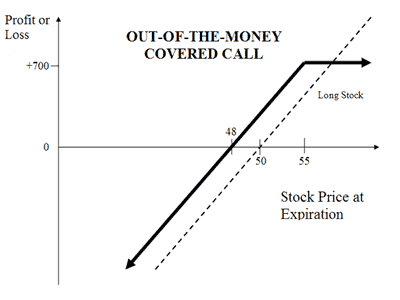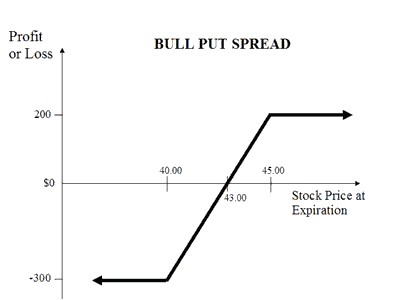 Zerodha (Trading Account)
Zerodha (Trading Account)
FREE Equity Delivery and MF
Flat ₹20/trade Intra-day/F&O
 Zerodha (Trading Account)
Zerodha (Trading Account)
FREE Equity Delivery and MF
Flat ₹20/trade Intra-day/F&O

|
|
Compare Covered Call and Bull Put Spread options trading strategies. Find similarities and differences between Covered Call and Bull Put Spread strategies. Find the best options trading strategy for your trading needs.
| Covered Call | Bull Put Spread | |
|---|---|---|
 |
 |
|
| About Strategy | A Covered Call is a basic option trading strategy frequently used by traders to protect their huge share holdings. It is a strategy in which you own shares of a company and Sell OTM Call Option of the company in similar proportion. The Call Option would not get exercised unless the stock price increases. Till then you will earn the Premium. This a unlimited risk and limited reward strategy. Let's assume you own TCS Shares and your view is that its price will rise in the near future. You will Sell OTM Call Option of TCS at a price, where you target to sell your shares. You will receive premium amount for selling the Call option and the premium is your income. | A Bull Put Spread (or Bull Put Credit Spread) strategy is a Bullish strategy to be used when you're expecting the price of the underlying instrument to mildly rise or be less volatile. The strategy involves buying a Put Option and selling a Put Option at different strike prices. The risk and reward for this strategy is limited. A Bull Put Strategy involves Buy OTM Put Option and Sell ITM Put Option. For example, If you are of the view that the price of Reliance Shares will moderately gain or drop its volatility in near future. If Reliance is currently trading at Rs 600 then you will buy an OTM Put Option at Rs 700 and a sell an ITM Put Option at Rs 550. You will make a profit when, at expiry, Reliance closes at Rs 700 level and incur losse... Read More |
| Market View | Bullish | Bullish |
| Strategy Level | Advance | Advance |
| Options Type | Call + Underlying | Put |
| Number of Positions | 2 | 2 |
| Risk Profile | Unlimited | Limited |
| Reward Profile | Limited | Limited |
| Breakeven Point | Purchase Price of Underlying- Premium Recieved | Strike price of short put - net premium paid |
| Covered Call | Bull Put Spread | |
|---|---|---|
| When to use? | The covered call option strategy works well when you have a mildly Bullish market view and you expect the price of your holdings to moderately rise in future. |
This strategy works well when you're of the view that the price of a particular underlying will rise, move sideways, or marginally fall. |
| Market View | Bullish When you are expecting a moderate rise in the price of the underlying or less volatility. |
Bullish When you are expecting a moderate rise in the price of the underlying or less volatility. |
| Action |
Let's assume you own TCS Shares and your view is that its price will rise in the near future. You will Sell OTM Call Option of TCS at a price, where you target to sell your shares. You will receive premium amount for selling the Call option and the premium is your income. |
A Bull Put Strategy involves Buy OTM Put Option + Sell ITM Put Option. For example, If you are of the view that the price of Reliance Shares will moderately gain or drop its volatility in near future. If Reliance is currently trading at 600 then you will buy a OTM PUT OPTION at 700 and a sell a ITM PUT OPTION at 550. You will make a profit when at expiry Reliance closes at 700 level and incur losses if the prices fall down below the current price. |
| Breakeven Point | Purchase Price of Underlying- Premium Recieved |
Strike price of short put - net premium paid |
| Covered Call | Bull Put Spread | |
|---|---|---|
| Risks | Unlimited Maximum loss is unlimited and depends on by how much the price of the underlying falls. Loss happens when price of underlying goes below the purchase price of underlying. Loss = (Purchase Price of Underlying - Price of Underlying) + Premium Received |
Limited Maximum loss occurs when the stock price moves below the lower strike price on expiration date. Max Loss = (Strike Price Put 1 - Strike Price of Put 2) - Net Premium Received Max Loss Occurs When Price of Underlying <= Strike Price of Long Put |
| Rewards | Limited You earn premium for selling a call. Maximum profit happens when purchase price of underlying moves above the strike price of Call Option. Max Profit= [Call Strike Price - Stock Price Paid] + Premium Received |
Limited Maximum profit happens when the price of the underlying moves above the strike price of Short Put on expiration date. Max Profit = Net Premium Received |
| Maximum Profit Scenario | Underlying rises to the level of the higher strike or above. |
Both options unexercised |
| Maximum Loss Scenario | Underlying below the premium received |
Both options exercised |
| Covered Call | Bull Put Spread | |
|---|---|---|
| Advantages | It helps you generate income from your holdings. Also allows you to benefit from 3 movements of your stocks: rise, sidewise and marginal fall. |
Allows you to benefit from time decay in profit situations. Helps you profit from 3 scenarios: rise, sideway movements and marginal fall of the underlying. |
| Disadvantage | Unlimited risk for limited reward. |
Limited profit. Time decay may go against you in loss situations. |
| Simillar Strategies | Bull Call Spread | Bull Call Spread, Bear Put Spread, Collar |

Add a public comment...

FREE Intraday Trading (Eq, F&O)
Flat ₹20 Per Trade in F&O
|
|